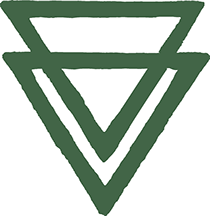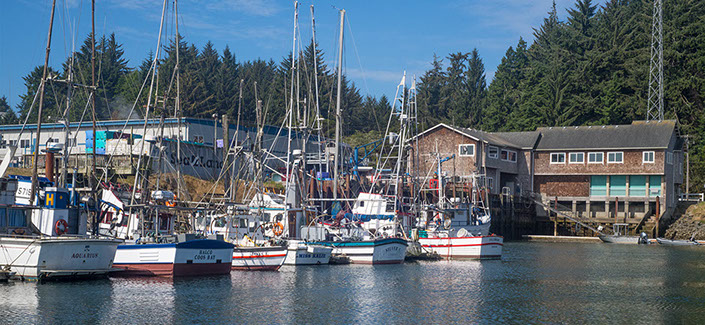
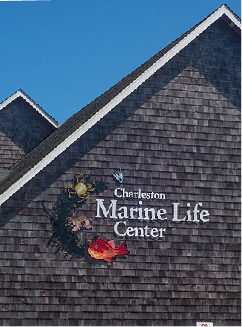



Historically, the Charleston Marine Life Center (CMLC) used to be a few tanks filled with marine animals on the side of the road across the street from the Oregon Institute of Marine Biology (OIMB). These tanks were filled with specimens OIMB students would be studying as a part of their research. Despite not being regularly maintained for visitors, the tanks attracted the attention of residents in the small community in Oregon. Their curiosity paved way for the development of a center where people could come together to learn about life in the ocean.
Since 2016, the CMLC has been open to the general public and acts as a bridge between the scientific and commercial fishing communities in Charleston. As visitors drive up to the center, they are greeted by the sights of the OIMB and a marina full of commercial fishing boats on either side of the Center. Within the CMLC’s walls, visitors can learn about the research being done by scientists and students at OIMB while seeing fishermen offloading the day’s catch through windows that open up to the marina.
This fishing village has always had a deep, personal relationship with the ocean and the CMLC enhances that relationship by highlighting locally focused science content that is accessible to everyone in the community and beyond.

Knute Nemeth, 61, a long time Charleston resident, has spent a lifetime out on the open ocean. At 17, he enlisted in the Navy and served for “three years, two weeks and six hours.” In 1982, Nemeth moved to Coos Bay and was a commercial fisherman for seven years. In 1990, he began working at Sause Brothers, a tugboat company primarily operating in the Pacific Ocean, before retiring four years ago. He’s since come out of retirement and is currently the Boat Operations/Assistant Facilities Manager for the Oregon Institute of Marine Biology.
“I like the ocean. It’s a challenge. It’s an awesome entity,” says Nemeth. When asked his feelings about spending his
life on the water, he says “I feel relieved, it’s like somebody shuts off the big pressure valve of life.”
The community leader also serves as president to both the Charleston Fisherman’s Memorial and the Charleston Community Enhancement Corporation. Nemeth made his first cinematic debut in 2014 in the film Taking My Parents to Burning Man.
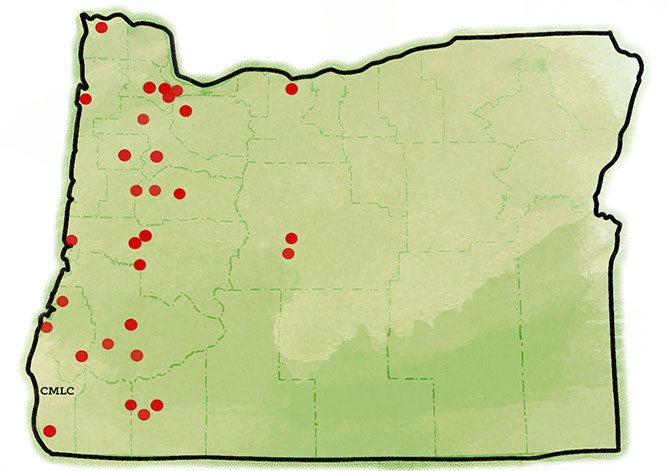
The red dots mark where Charleston Marine Life Center visitors have come from.
All data was collected from January - June of 2018.

Words by CJ Keshap Portrait by Whitney Calvin
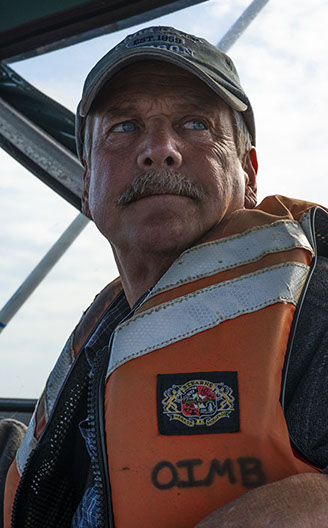
The Charleston Marine Life Center (CMLC) is a physical space where visitors can see the relationship between commercial fishing and research become locally focused science content. Knute Nemeth is an example of how that relationship transcends the boundaries of the CMLC and trickles down into the community.
Nemeth has spent over 35 years out on the ocean. In his youth, he worked as a commercial fisherman. Now he spends his time working for the Oregon Institute of Marine Biology (OIMB) as the Boat Operations/Assistant Facilities Manager. His current roles include maintaining the vessels, checking lights, stocking safety gear, and working with the seawater systems that fill the laboratories and aquariums at the OIMB.
Nemeth sees the working relationship between fishermen and scientists on a regular basis. “When fishermen catch something strange and they’re not sure what it is they’ll run it over to [OIMB] and say ‘What is this?’,” says Nemeth. Research also helps to predict what fishing seasons will be like. “Dr. Alan Shanks has been doing crab larval studies, so if you’re a Dungeness crabber you probably want to pay attention to what he said.”
Nemeth also believes that scientists and fishermen are kindred spirits. “If you’re not enjoying it then you shouldn’t come out on the water. I mean being out on the water is not for everybody. Let me put it like that. At times it can be trying, cold, wet, and miserable. So you have to be a little bit self-reliant.”
As a frequent visitor of the CMLC with his grandchildren, Nemeth enjoys seeing his grandchildren excited to learn about the environment he’s worked in for decades. “It’s kind of an old hat for me. With the grandkids, I’m showing them something they haven’t seen before.”
In the years to come, Nemeth sees Charleston’s tourism industry growing. “We have the raw natural resources and basically a clean area where they come out to camp, recreate and fish or crab,” says Nemeth. Since the introduction of sustainable fisheries in the area, regulations concerning commercial fishing have been put into place in order to sustain populations for future fishing seasons. “In the future, we’ll have to contend with what we and the agencies come up with and try to live with that. You know, the ocean is pretty vast and you spend any time on it, and you realize how vast it is and how big, but it’s finite too.”

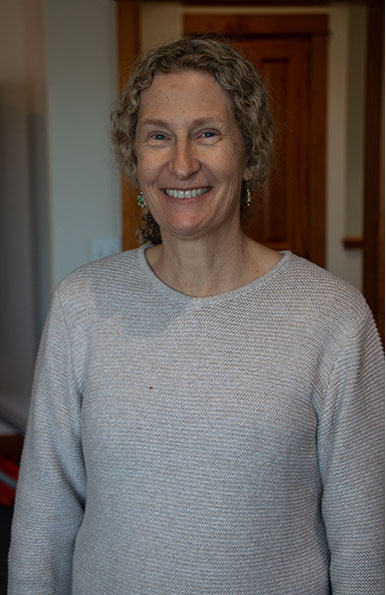

The Charleston Marine Life Center (CMLC) plays several roles within the Charleston community. It’s an educator, inclusive and a source of pride.
“From the education hat, I think it’s good for people to have an understanding of what’s around them in the natural world,” says Trish Mace, Director of the CMLC. The center provides a space where anyone can learn more about locally-focused science content.
“I think it’s important that we serve as a role for mentoring youth interested in marine science, or at least think they’re interested and want to find out if they are.” As Director, Mace is responsible for educating volunteers. While the volunteers at the center are all community members ranging in ages from 13 to 92, the majority of volunteers are high school and college students.
The CMLC’s relationship with the Oregon Institute of Marine Biology provides the foundation for science education to be a defining goal for the center. Students often volunteer, but Mace believes that the center is an equal resource for the students. It houses a lot of the same animals that OIMB students are studying, so students are able to spend time doing observational projects.
In addition to science education, the CMLC actively highlights the commercial fishing industry in town. From informative exhibits to windows that open up to the harbor and fishing community, the inclusion of a strong identifying marker of Charleston makes for a harmonious relationship between education and industry.
And for local visitors that is a proud connection. There are visitors who have lived in Charleston all of their lives who come in and discover the diverse ecosystem that has been lurking under the surface the entire time. “It’s nice to have a reminder of how special and remarkable and beautiful this area is,” says Mace.
Moving forward, Mace hopes to expand education programming for all ages and continue to provide opportunities for volunteers who passionate about marine life. “Our volunteers want to learn about marine science; they're curious and want to keep learning. We're all learning together."

Words by CJ Keshap Portrait by Jessica Smith
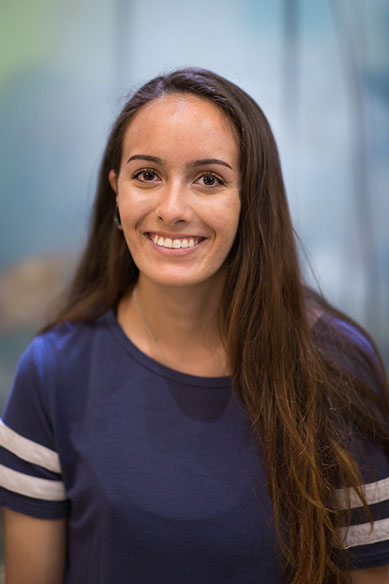

As an institution that relies on the desire to learn, a sense of discovery is a vital resource. Volunteer Jordan Puri has that sense of discovery and is an example of why science is so important to the Charleston community.
One of Puri’s main tasks as a volunteer is to collect organisms to feed to animals in the tanks. Every week she ventures out into the marina and pulls up abandoned crab nets covered in various species of tunicate, crab, and shrimp. If she ever finds something that she’s unfamiliar with, she will ask the Director of the Charleston Marine Life Center (CMLC) Trish Mace and then go home and research it into the early hours of the morning.
Puri feels a strong attachment to the animals she takes care of. “Some people don’t realize when you’re volunteering here it is kind of hard because sometimes you’ll lose animals that you’ll be attached to.” Her best friend at the CMLC is actually a red octopus named Charlie.
Although Charlie is her favorite, she feels a strong connection with all of the center’s residents. “I would do anything for the animals,” says Puri.
Puri has been volunteering with the CMLC for a year. “I started because I’ve always loved marine science and marine biology.” She’s starting classes at Southwestern Oregon Community College in the fall and plans to attend the Oregon Institute of Marine Biology in the future.

Words by CJ Keshap Portrait by Jessica Smith
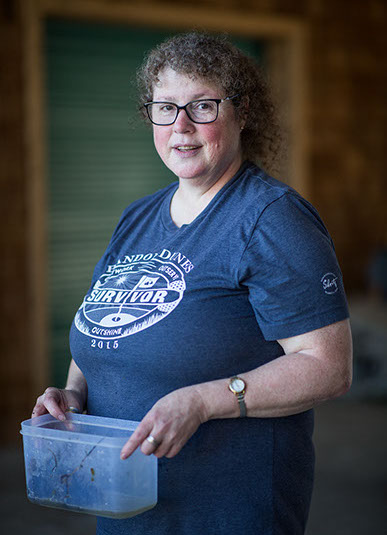

Peggy McAuley has always loved the beach. Even through turbulent times as an adolescent, she could rely on the beach to help her get her head straight. “[You] stop thinking about your problems and start thinking ‘What is under that rock?’; it was that kind of stuff.”
As a volunteer at the Charleston Marine Life Center (CMLC), she enjoys working with marine life and people alike. “I used to have fish tanks at home and I can’t have them now where I live, but I have tanks here so they let me come and play in them,” says McAuley. In addition to spending time with the animals, she also spends time on the floor greeting people, algae wiping, barnacle vacuuming, and completing other housekeeping tasks.
McAuley sees a wide variety of visitors at the CMLC. “I ask them, ‘How did you find us?’ because it’s not like there’s a big sign out front.” She reports that visitors learn about the CMLC via Facebook, word of mouth, or by simply getting lost and seeing an open door.

Words by CJ Keshap Portrait by Jessica Smith
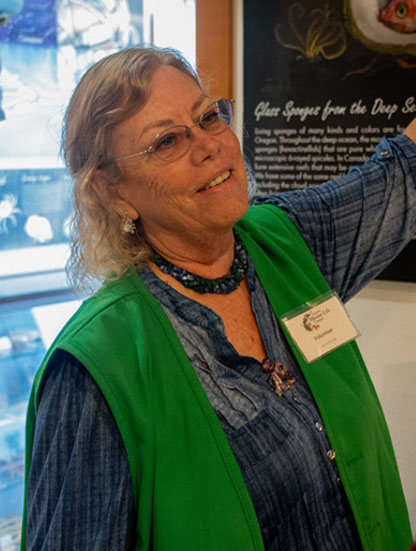

Kathy Hornstuen moved to Charleston 44 years ago with her husband who was involved with the commercial fishing industry. Now, her son is a commercial fisherman as well. She has been volunteering at the Charleston Marine Life Center (CMLC) for a little bit over a year now.
When the CMLC was being built, Hornstuen donated money to the project as the Vice President of the Charleston Community Enhancement Corporation (CCEC). “It was something that could enhance our community and bring people to town and help our economy to diversify from just fishing to tourism,” says Hornstuen on the importance of involving the CCEC.
Her current volunteer position allows her to be a better community ambassador. She speaks with many tourists and locals looking for things to see and do in the Charleston area. “If people have questions about what we have in town to do, I can tell them about that as well as all the marine animals because all the animals in here are native to this coast right here,” says Hornstuen.
To Hornstuen, the relationship between the community and ocean are vital. “Charleston is a real working fishing village that brings multi-millions of dollars into this country.” So her role as an volunteer and educator in the CMLC is essential. As Hornstuen says, “I love my community.”

Words by CJ Keshap Portrait by Jessica Smith















Coming back into the Charleston Marina, the “Betty Kay” vessel is commanded by its owner into position to slowly dock itself. The Charleston Marina has become a hotspot for local fisherman or even tourists coming from out of town.
The vessel docked below the Charleston Marine Life Center contributes an essential part of what makes up the Charleston Marina. The Charleston Marine Life Center, which translates difficult scientific research for the general population into educational exhibits.
The vessel owned by the Oregon Institute of Marine Biology allows students from the OIMB to explore and get a more hands-on experience in their eventual field of study.
Located aboard the Oregon Institute of Marine Biology owned boat, the hatch opening from the boat’s floor, reveals the engine and sleeping stations embedded into the boat’s bottom half.
Below the boat’s exterior and down the hatch, the vessel’s engine room reveals the intricacies that allow the steady sailing on the OIMB owned boat.
A close look at the vessel’s controlling system.
The vessel owned by the Oregon Institute of Marine Biology sits below the Charleston Marine Life Center awaiting for students from the OIMB to utilize for in the field, hands on training.
The Charleston Marine Life Center provides information to the local community about animals along the Oregon Coast. The CLMC features multiple exhibits including shark jaws from Mako sharks that have been preserved for the public.
The Charleston Marine Life Center is home to hundred of preserved animals that have been used to study the surrounding animals near the Oregon Coast. The Pacific Harbor seal is encased and preserved for the viewing of the thousands of visitor who come annually to the CLMC.
The several shark jaws, who are native to the Oregon Coast are put on exhibit at the CLMC.
Knute Nemeth, boat operator and assistant facilities manager for the Oregon Institute of Marine Biology for nearly 8 months gives us a tour of the OIMB owned vessel that allows students studying at the OIMB to train further into their field.
The Charleston Marine Life Center has become apart of the Charleston Marina and the local community of Charleston.
Jessica Smith, a student in the University of Oregon Science and Memory class attempts to capture the beauty of the Charleston Marine Life Center.
Aboard the vessel owned by the Oregon Institute of Marine Biology, CJ Keshap listens attentively to Knute Nemeth, the boat operator and assistant facilities manager, who works directly with the OIMB.
The director of the Charleston Marine Life Center, Trish Mace, talks to the students of the Science and Memory class about the Charleston Marine Life Center.
<
>
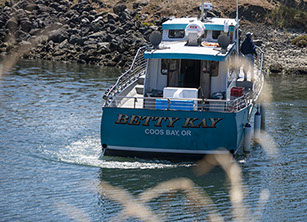
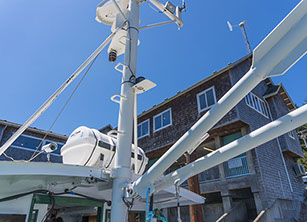
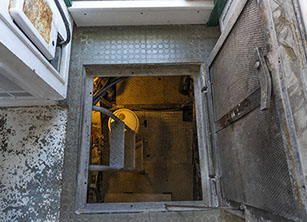
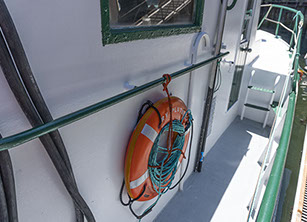
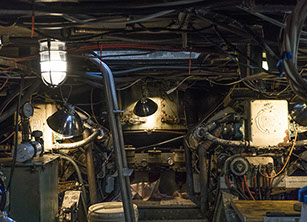
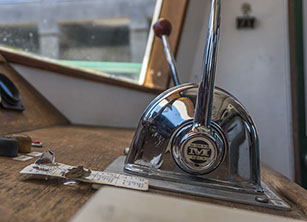
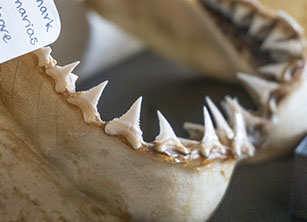
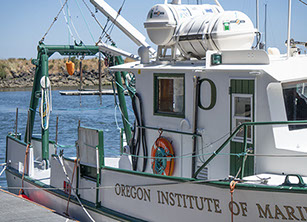
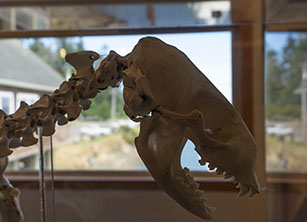
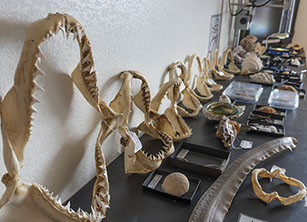
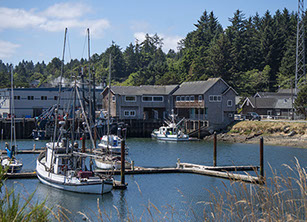
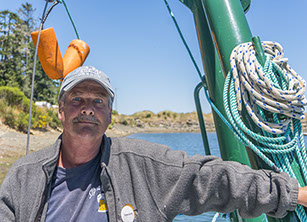
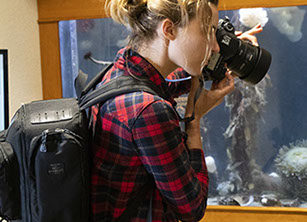
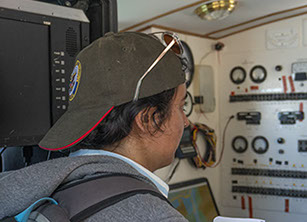
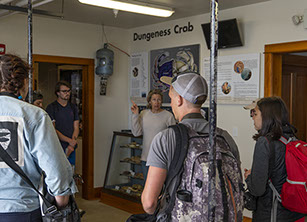
Photos by Julio Jaquez












Knute Nemeth prepares to set sail departing from the Charleston Marine Life Center located in the Charleston Marine near Coos Bay, Oregon. Working as an employee for the Oregon Institute of Marine Biology for eight months now, Knute is boat operator and assistant facilities manager.
Knute Nemeth captains the steel vessel out of the Charleston Marine into the South Slough. As we exit the Marina, we pass by all the boats docked nearby.
Nemeth maneuvers his way out of low tides to begin our journey. Before working with the OIMB, Knute has worked as all his life on the seas, whether it be a fisherman or working for a boat towing company, Knute is no stranger to the waters.
Due to precautionary measures, Knute Nemeth practices water safety by prepping our Science and Memory class with the bright orange life-jacket labeled OIMB, which served a specific look while aboard the steel vessel.
Driving past multiple buoys harboring sea gulls, these sea infrastructures in the ocean have become home for seagulls looking for a place to rest.
While our Charleston Marine Life team asks Knute a few questions about his role in the Charleston community, he explains his role working for the Charleston Community Enhancement Corporation. They are a nonprofit organization that tries to better the life in Charleston for our residents and visitors.
Passing by the Coos Bay Harbor, Knute commands the steel vessel along the harbor, explaining the various ships and their duties.
A senior at the University of Oregon, Noah Andrews pilots a drone above the South Slough to capture visuals. Lifting the drone off the steel vessel, Noah uses his experience to guide the drone off the moving boat.
As Knute commands the vessel along the South Slough, the bridge between Charleston and Coos Bay remains an essential bridge between the nearby communities.
A member of the Charleston Marine Life team, Raffi Torres, a videographer attempts to capture every gleaming moment along the South South. Clearly visible, the orange life-jacket attached keeps Raffi safe on his journey accompanying Knute.
While interviewing Knute, CJ Keshap, a member of the Charleston Marine Center team attentively listens and take notes on him speaking upon his role in the Charleston community.
Mounted atop the boat labeled Oregon Institute of Marine Biology, Knute Nemeth makes adjustments to the vessel that he has facilitated for the last eight months throughout his tenure at the OIMB.
<
>
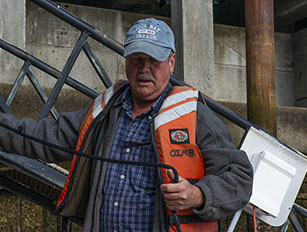
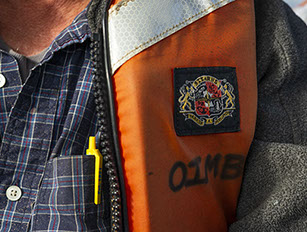
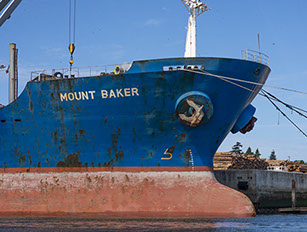
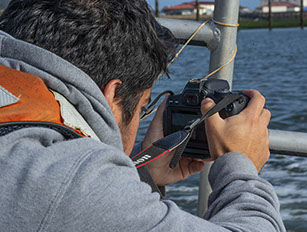
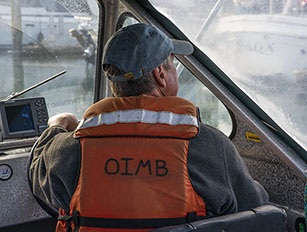
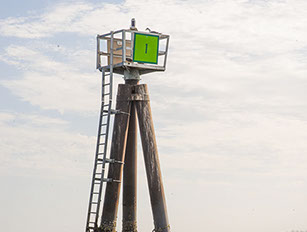
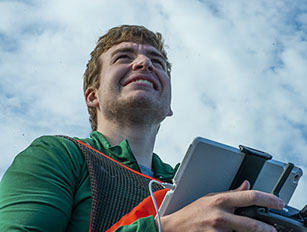
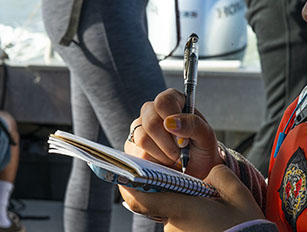
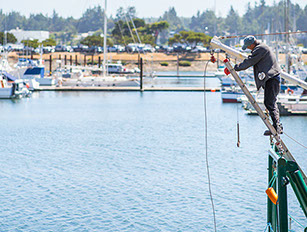
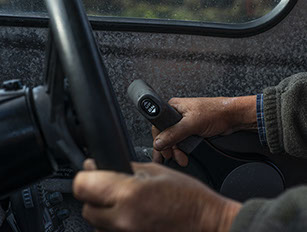
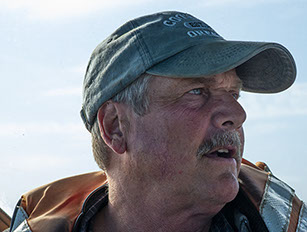
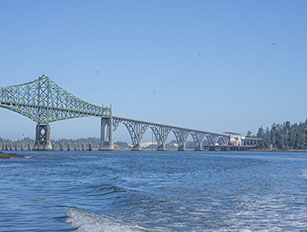

by Julio Jaquez & Jessica Smith
